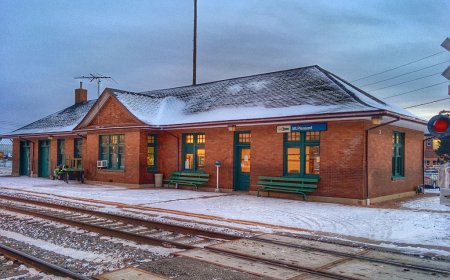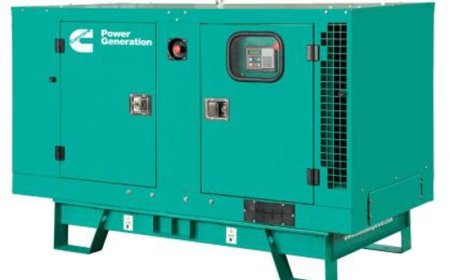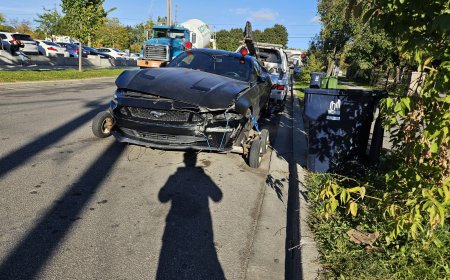Why Concrete Jacketing Is Used in Structural Strengthening
Strengthen ageing RCC buildings with Concrete Jacketing. Learn why it's India’s top choice for structural repair, seismic safety, and load enhancement.

In India, a large percentage of buildings are more than 25 years old. Many of them were not built following modern codes. Over time, they face wear and tear due to factors like overloading, corrosion, earthquakes, or poor construction practices. Hence, strengthening these structures becomes critical. One of the most effective and commonly adopted methods for this purpose is Concrete Jacketing, which ensures safety, durability, and compliance.
What Is Concrete Jacketing?
One method of reinforcing a structure is concrete jacketing. It entails applying a fresh layer of reinforced concrete over preexisting components, such as beams, columns, or slabs. The original structural part is made larger and stronger using this technique. It works especially well for buildings that have undergone degradation or whose load requirements have changed. This method is employed by Indian engineers to guarantee that structures fulfil performance and safety requirements over an extended duration.
Why Strengthening Is Necessary in RCC Buildings
Before the introduction of modern seismic or design rules, many Indian buildings were built. By today's standards, these structures are frequently dangerous. These vulnerabilities have been made clear by natural disasters like earthquakes, particularly in states like Gujarat, Maharashtra, and Assam. Furthermore, structures must be vertically expanded due to urbanisation. Changes like this can be dangerous if they are not strengthened properly. In these circumstances, concrete jacketing offers a useful and affordable method of improving structural integrity.
The Mechanism Behind Structural Strengthening
Structural strengthening increases a member's rigidity and load-bearing capacity. Additionally, by increasing ductility, the structure may take more energy before breaking. Concrete jacketing gives existing members more concrete and steel. Both axial and bending resistance are enhanced by this change. The building becomes more sturdy, to put it simply. This translates into increased safety, longer building life, and peace of mind for Indian homeowners, builders, and society members.
Key Benefits of Concrete Jacketing for Indian Infrastructure
Indian engineers and contractors favor this method for a number of reasons. First of all, it uses easily accessible materials and is reasonably priced. Second, demolition is typically not necessary for the process. It is therefore perfect for adapting buildings that are occupied. Thirdly, it aids in restoring the strength of elements that have degraded due to fire or corrosion. Concrete jacketing is a very reliable technique for public buildings where safety is crucial, such as hospitals and schools.
Common Situations That Require Jacketing
Concrete jacketing is advised in several circumstances. Strengthening is essential when there is an increase in live load, such as when residential areas are converted into commercial ones. In a similar vein, jacketing is very beneficial for buildings that show obvious cracks or deflection, which are indicators of structural distress. Additionally, if there were design flaws or subpar craftsmanship in the initial construction, this method can address the issue without having to replace. In India's quick-paced real estate market, these situations are typical.
Seismic Strengthening for Earthquake-Prone Areas
Many buildings in India are not earthquake-resistant, and the country is located in multiple high-seismic zones. Concrete jacketing improves a structure's resistance to seismic activity. It increases the ductility and strength of components like beams and columns. This method has produced great outcomes in post-earthquake repair in places like Bhuj and Sikkim. To meet contemporary earthquake safety standards, structural consultants frequently recommend jacketing for buildings located in active seismic zones.
Performance in Fire-Affected Buildings
Because fire erodes the steel within, it can seriously harm reinforced concrete. Fire safety regulations in India are still developing. As a result, many structures are at risk. The impacted beams or columns become weaker following a fire. In these situations, concrete jacketing is utilized to restore structural strength. It guarantees that injured members return to their prior level of performance. Malls, hotels, and older commercial buildingswhere fire incidents are more frequentwill find this service very helpful.
Minimal Disruption During Retrofitting
Whether or not property owners must leave the premises while repairs are being made is one of their main worries. Temporary relocation is not practical in the majority of Indian situations, including homes, workplaces, and institutions. Only modest workspaces are needed for concrete jacketing. It is possible to complete renovations while the building's residents are still there with careful planning and safety precautions. Because of this, it is perfect for residential societies, hospitals, and schools that cannot afford extended downtime.
Compatibility with Indian Construction Materials
Standard cement types, rebar, and concrete grades are used in the majority of Indian building projects. These materials work well with concrete jacketing. The difficulties of combining incompatible systems, which can occur with imported strengthening products, are avoided. Local contractors can perform jacketing without specific training because they are already familiar with conventional construction methods. This lowers the price and guarantees that strengthening projects are finished on schedule.
Boosting Load Capacity for Vertical Expansion
Due of a lack of available land, older buildings in urban India are expanding vertically. New floor additions put more strain on structural components, particularly columns. This may result in failure or cracks if it is not strengthened. In these situations, concrete jacketing is the recommended technique. By increasing the axial load-carrying capability, it guarantees that the columns can support the additional weight. Before allowing more development, Indian building codes usually demand a structural audit, and jacketing is usually advised after the audit.
Role in Compliance with Updated Structural Codes
Older buildings need to adjust as municipal requirements and IS rules change. Compliance is crucial, whether it pertains to load-bearing specifications, fire resistance, or seismic design. By using concrete jacketing, these structures can comply with modern requirements without having to be demolished. This is especially helpful in places with limited space and high reconstruction costs, like Delhi, Bengaluru, and Chennai. Jacketing provides a cost-effective and compliant way to upgrade current members.
Durability and Long-Term Protection
Durability is another important benefit in addition to strength. High levels of humidity and salt in the air hasten the corrosion of steel reinforcing in coastal cities like Chennai and Mumbai. By adding a fresh layer of protection, concrete jacketing prevents additional corrosion. The service life of RCC elements is greatly increased when the surface is properly treated and the cover is thick enough. This lowers future maintenance expenses and guarantees long-term savings.
Who Should Consider This Service?
Many different types of people can benefit from this strengthening service. Hospitals seeking NABH compliance, industrial facilities needing structural audit clearance, housing societies contemplating renovation, and school buildings older than 20 years are all excellent prospects. Concrete jacketing should be taken into consideration even by independent homeowners who see cracks or aging in columns. Early identification and prompt action are crucial to preventing later, costly rebuilding.
Design and Execution by Experts
The technique may appear straightforward, but it requires careful planning. Structural engineers use tests such as core cutting, UPV, and rebound hammer to assess the building. They choose the jacketing's dimensions, reinforcement, and concrete grade based on these findings. For bar bending, shuttering, and curing, specialized personnel is needed for execution. To guarantee excellence, structural repair specialists in India adhere to strict protocols. For structural dependability, always make sure your service provider has jacketing experience.
Choosing the Right Service Provider
When it comes to Concrete Jacketing, choosing the right company or contractor is crucial. Seek out suppliers who adhere to IS norms, utilize permitted materials, and give structural checks. Steer clear of companies who provide low-cost solutions without adequate technical validation. Inquire about previous job history and whether documentation is available. Making the correct decision guarantees both safety and cost-effectiveness in Indian settings, where repair budgets are limited. You are paying for skills as well as materials.
In India, concrete jacketing has emerged as a top technique for strengthening and repairing structures. It satisfies the requirements of both rural and urban buildings. This method provides a workable answer for problems like corrosion, seismic risk, or growing loads. It suits tight budgets, produces long-lasting results, and works with Indian materials. Consider using this tried-and-true service technique to strengthen and prolong the life of your structure if it exhibits signs of frailty.






































